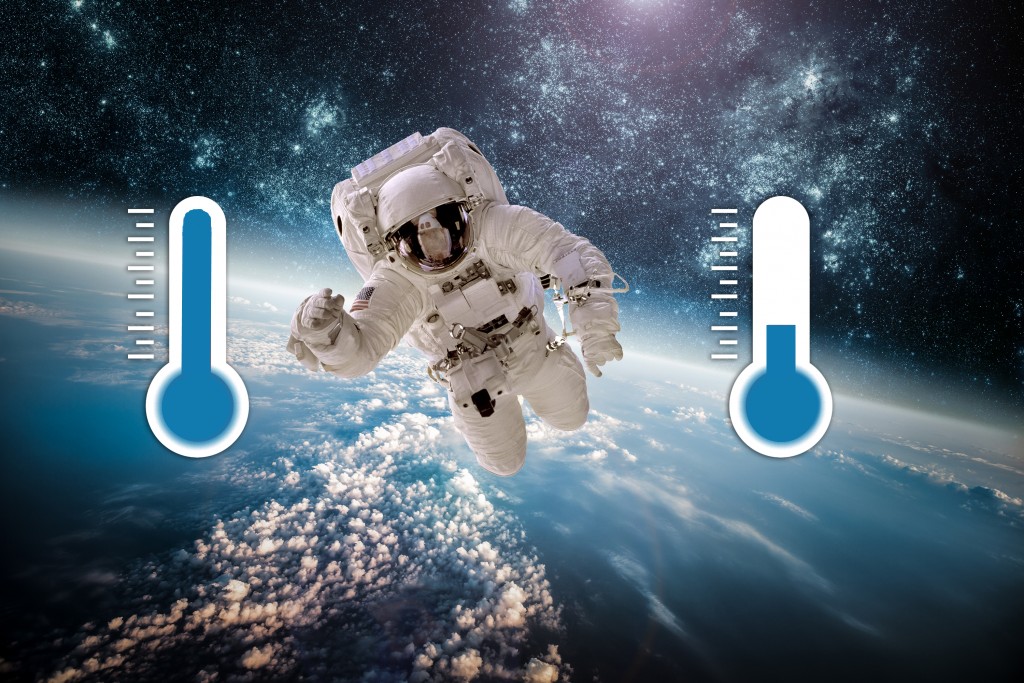Hostile Environment: How cold is Space?
28th Nov 2022
Our understanding of the universe is very limited. From books and films, we “know” how terribly cold is space. On the other hand, we also “know” that it can be very hot there. In fact, Outer Space has no temperature at all. Surprised? Let’s figure it out.
Why is Space Really Cold?
Let’s start with the fact that measuring temperature in space by conventional means, for example, with a thermometer, is impossible, because space in its purest form is a vacuum, where nothing can support a heat exchange. By definition, the temperature is a measure of the average kinetic energy of a given substance’s molecules. If there are no molecules, then there is nothing to measure. So, do we have absolute “zero”? Absolute zero is minus 273.15 degrees Celsius, or zero Kelvin. Is space really so cold? Theoretically, such a temperature can only be obtained in a closed system. But in practice, nowhere, on Earth nor in space, is it possible to create or simulate such an area that would not be influenced by any external forces.
Even though space is an endless void, it is not absolute. It contains many material and energy objects: stars, planets, nebulae, comets, etc. All of these are sources of radiation — primarily infrared. Photons pass through space, but in its void, they have nothing to heat. It is only when they fall on something, like the surface of the Earth, that kinetic energy is converted into heat, and we can feel and measure it. In other words, heated particles of light and radiation come from celestial bodies and pass through the vacuum of space until they collide with something denser. Only this “something” can heat up. Until then, space is nothing but a thermos.
How Cold is Deep Space
Space is pierced by rays of invisible relic radiation (cosmic microwave background) ─ the aftereffect of the Big Bang. Of course, near a star, the radiation of the star itself will be added to this relic radiation. But the particle density is so low that they have to travel huge distances to collide with another object. That is why space temperature drops rapidly as the distance from the heat source increases. This explains why space is cold, but the Sun is hot.
How cold is it in space in Celsius? The coldest and densest clouds of molecular gas can have a temperature down to -263 ⁰C, while the less dense ─ up to -173 ⁰C. But in expanding nebulae, temperatures can drop as low as 1 K, or -272 ⁰C.
Two decades ago, the Hubble Space Telescope discovered a nebula called the Boomerang Nebula, 5,000 light-years from Earth, in the Centaurus galaxy, which was formed by a phenomenon known as the “stellar wind.” The idea is that a current of the matter is “blown out” from the central star at a frantic speed, which, as a result of falling into the rarefied expanses of space, expands sharply and cools down.
Scientists estimate that the temperature in the Boomerang Nebula is one degree Kelvin, that is, -272 Celsius. This is the lowest mark that has been registered so far.
How cold is space near the Sun?
Accumulations of dust and gas in the interstellar space of our Milky Way galaxy have a temperature of about 10-20 degrees Celsius above absolute zero. But next to the stars, it can reach several million degrees. The Sun is one of the thousands of stars in the Milky Way and a relatively young one, currently in the middle of its life cycle. The temperature in the solar core reaches 17,500,000 °C. In the corona, the average temperature is 1-2 million degrees. In the photosphere, which is the main source of heat for our solar system, the temperature decreases from 6600 K to 4400 K as we approach the outer edge. Just imagine how hot is space in direct sunlight.
How cold is space just outside of Earth?
The temperature near a star all depends on the class of the star and the distance to it. In our case, the Sun is a yellow dwarf, so it doesn’t get “too” hot. Our planet is a bit away from the Sun, plus it has a fairly dense atmosphere that protects us from direct sunlight and allows us to maintain an average temperature of 7 degrees Celsius, which is comfortable for life. For comparison, on the atmosphere-less Mercury closest to the Sun, it reaches 440 degrees. But what is the temperature in space near the Earth?
Outside the ISS, the temperature ranges from -4°С to +45°С. At the same time, the side of the ISS facing the Sun can heat up to +2600C, while the shadow side can cool down to -1000C. This is explained by the fact that at an altitude of 250-300 km, where the ISS orbit passes, the gas is much less rarefied compared to deep space, so there is heat exchange due to matter flows.
Can You Feel the Cold in Space?
Yes, if you find yourself in space without a spacesuit or this spacesuit is defective. You will get cold, gradually cooling down to the surrounding space temperature. In space, the atoms in your body have nowhere to transfer heat to, so you won’t feel the icy cold. At least, not right away.
You will begin to cool down only after all chemical processes stop and the atoms in your body stop moving.
How fast would you freeze in space?
Depending on how cold is space in that area, you will freeze within 12 – 26 hours. For comparison, in the waters of the Arctic Ocean, you can die from hypothermia in less than 10 minutes. But it’s not that simple. Space is an absolutely hostile environment for living organisms. And if you get there without a spacesuit, after about 15 seconds, you will lose consciousness from a lack of oxygen, and after another 90 seconds, you will die from suffocation. However, even earlier, your blood will boil from pressure drops. But if you are close enough to the star, instead of all this, you will simply burn to ashes.
Space is getting hotter
No matter how cold space is, it is getting hotter. In 2020, scientists at Ohio State University’s Center for Cosmology and Particle Physics processed data from the European Space Agency’s (ESA’s) Planck astronomical satellite, designed to study variations in the CMB, and found that gases near space objects closer to Earth reach temperatures of about 2 million degrees Kelvin. This is about ten times the temperature of gases around objects located farther in distance and in time. So, scientists came to the conclusion that the temperature in space is gradually increasing due to the natural process of galaxies and intergalactic structure formation.
![Beauty of the Pink Moon And Lyrid Meteor Shower in This Week’s Best Astrophotos [19-26 April] Beauty of the Pink Moon And Lyrid Meteor Shower in This Week’s Best Astrophotos [19-26 April]](https://orbitaltoday.com/wp-content/uploads/2024/04/Pink-Moon-is-on-its-way-above-the-mountains-1-300x300.jpg)





Thank you for your comment! It will be visible on the site after moderation.